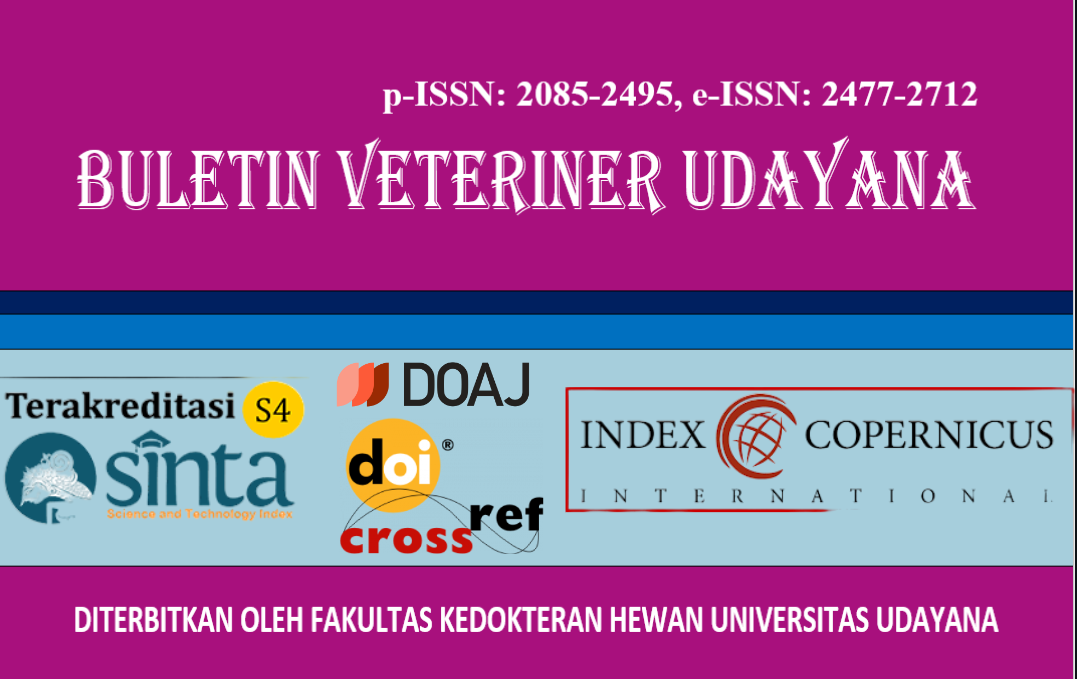ESCHERICHIA COLI AND SHIGELLA SP. INFECTIONS IN BROILER CHICKENS AT A CLOSED HOUSE FARM IN BATUNGSEL VILLAGE, TABANAN
DOI:
https://doi.org/10.24843/bulvet.2024.v16.i06.p20Keywords:
Avian pathogenic Escherichia coli, APEC, broiler, colysepticemiaAbstract
Escherichia coli is a coliform bacterium naturally found in the intestines of mammals. However, pathogenic strains, such as Avian Pathogenic Escherichia coli (APEC), can cause systemic infections and bacteremia in poultry. Infections by Escherichia coli in broilers lead to economic losses due to decreased production and increased mortality. This case report was conducted under protocol number 1/N/24, using anamnesis, clinical signs, epidemiological data, anatomical pathology, and histopathology observations to diagnose the condition. A 28-day-old white broiler chicken was collected from a closed house farm in Batungsel Village, Pupuan District, Tabanan Regency. Observed signs included lethargy, reduced appetite, an enlarged reddish abdomen, and white diarrhea. After the chicken's death, a necropsy was performed, and organ samples were preserved in 10% Neutral Buffered Formalin (NBF). Samples of the brain, lungs, liver, heart, spleen, kidneys, intestines, bursa, and feces were analyzed in histopathology, bacteriology, and parasitology laboratories. Histopathological preparations were stained with hematoxylin and eosin for microscopic examination. Bacterial infection tests included culturing samples from the intestines, liver, lungs, and heart on general, selective-differential, and Blood Agar media, followed by primary and secondary tests. The presence of Escherichia coli and Shigella sp. was confirmed. Parasite examinations using the flotation method showed no worm eggs or coccidia. These findings confirmed that the chicken was infected with Escherichia coli and Shigella sp.To prevent such infections, maintaining clean and sanitized housing is essential. Strict biosecurity measures are crucial to prevent external bacterial contamination. With good management practices, broiler chicken health can be optimally maintained.




